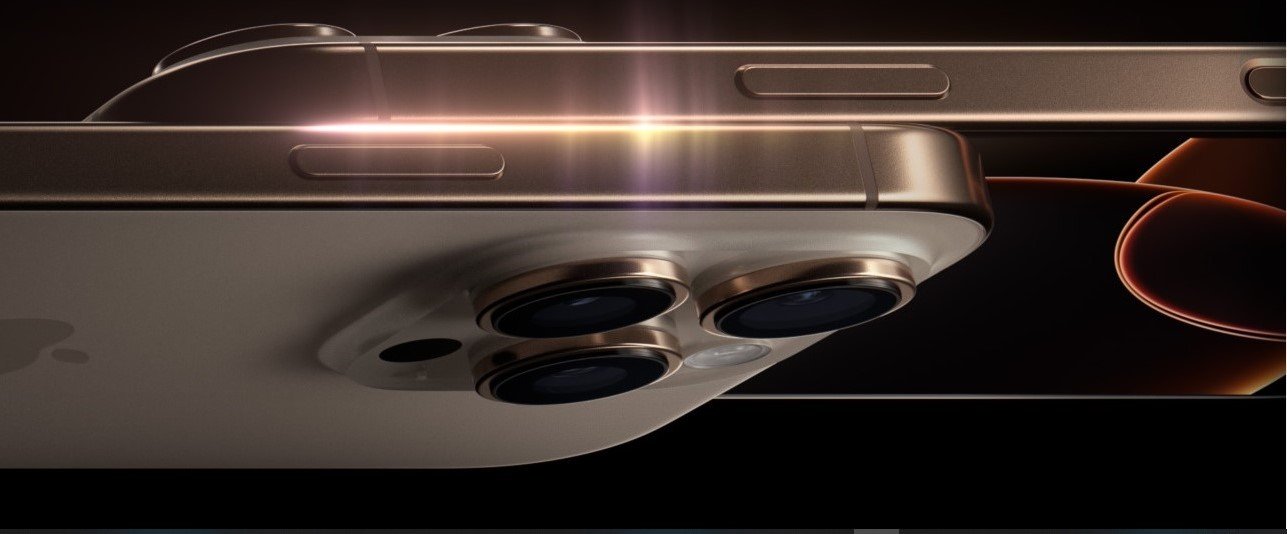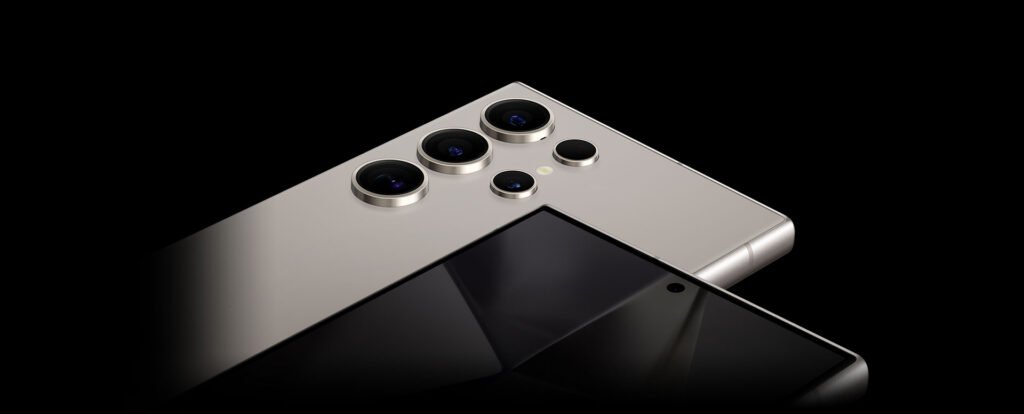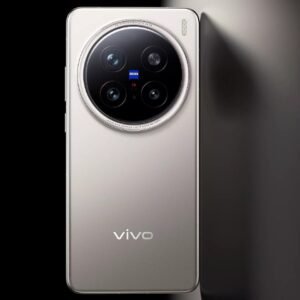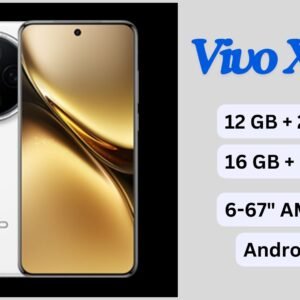
The Apple iPhone 16 series has once again pushed the boundaries of what’s expected from a flagship smartphone. Here, we’ll delve into an in-depth analysis of iPhone 16 Vs iPhone 16 Plus Vs iPhone 16 Pro Vs iPhone 16 Plus Max.
We’ll look at specifications, software optimizations, and performance in niche scenarios, offering insights that go beyond the surface-level features.
Table of Contents
Design and Build
The iPhone 16 lineup continues Apple’s tradition of premium build quality with a sleek design. The standard iPhone 16 and 16 Plus maintain an aluminum frame, while the Pro models (iPhone 16 Pro & iPhone 16 Pro Max) boast a titanium body, offering a slight edge in durability and weight reduction.

However, from a drop test perspective, all models feature Apple’s Ceramic Shield glass, which is claimed to be 50% tougher than the previous generation.
In real-world tests (based on a tipster), while the iPhone 16 Plus showed a crack after a 4-foot drop, this is generally in line with expectations for glass-backed phones, underscoring the need for protective cases.
Display Quality and Performance
The iPhone 16’s display, while maintaining a 60Hz refresh rate, offers vibrant colors and high brightness levels, with a peak of 2,000 nits for outdoor visibility. However, when compared to competitors like Samsung’s Galaxy S24 series, which boasts a 120Hz refresh rate across its lineup, the iPhone’s display might feel less fluid in animations and scrolling.
Apple’s focus on color accuracy and HDR performance, though, makes it a top choice for content creators and those who value screen quality in diverse lighting conditions.
Memory and Storage
The iPhone 16 series has seen an upgrade in memory configurations from the predecessor (iPhone 15). The iPhone 16 family comes with 8GB memory. This RAM increase significantly enhances multitasking capabilities and app retention. For instance, switching between high-demand applications like video editors and games is smoother, providing a near-desktop-like experience on a mobile device.
The Internal Storage Storage Options are:
- iPhone 16 & 16 Plus: 128GB, 256GB, 512GB
- iPhone 16 Pro: 128GB, 256GB, 512GB, 1TB
- iPhone 16 Pro Max: 256GB, 512GB, 1TB
The use of NVMe storage ensures quick app launches and data access, with all models now starting at higher capacities to accommodate the ever-growing data needs of users, particularly with high-resolution photos and videos.
Size and Weight
iPhone 16 Plus: 160.9 x 77.8 x 7.8 mm, 203 grams
iPhone 16 Pro: 146.6 x 70.6 x 8.3 mm, 187 grams
iPhone 16 Pro Max: 159.9 x 76.7 x 8.3 mm, 221 grams
The design philosophy continues to emphasize ergonomics, with the iPhone 16 and 16 Pro being notably lighter than their predecessors, thanks to new material choices like titanium in the Pro models. This reduction in weight, paired with the same screen size for the Pro models, makes them more comfortable for prolonged use.
Processor
The heart of the iPhone 16 series is its processor:
The iPhone 16 & 16 Plus is equipped with the A18 chip, built on a 3nm process—a similar process used in Snapdragon 8 Elite SOC. With this kind of processor, speed and power are significantly improved. The A18 features a 6-core CPU with 2 performance cores and 4 efficiency cores, alongside a 4-core GPU.
This setup ensures that everyday tasks run smoothly, while more demanding applications like AR and gaming benefit from the enhanced graphics capabilities and machine learning tasks are handled with greater speed due to the 16-core Neural Engine.
In iPhone 16 Pro & Pro Max the A18 Pro chip steps it up with an 8-core CPU, including 3 performance cores and 4 efficiency cores for even better multitasking and performance under load.
The GPU is bumped to 5 cores, providing a noticeable boost in graphics performance, crucial for high-end gaming and professional applications. The Neural Engine here is also enhanced, now with 18 cores, facilitating Apple Intelligence features and advanced photography algorithms.
Xiaomi 14T Pro: Specs, Price, Release Date & More
Acer Aspire Vero AV14 52P – 13th Gen Intel, 8GB RAM and 512GB SSD
Performance and Software Optimization
Powered by the A18 chip in the non-Pro models and the A18 Pro in the Pro variants, the iPhone 16 series offers unparalleled performance for iOS devices. Apple’s tight integration of hardware and software leads to optimizations not always seen in Android counterparts.
For instance, the iPhone 16 supports Apple Intelligence, bringing AI-driven features like enhanced Siri capabilities, which are not available on the iPhone 15 or earlier models, showcasing Apple’s forward-thinking in software enhancements.
Camera Performance
The iPhone 16 introduces a 48MP main sensor across all models, but the real magic lies in Apple’s computational photography.
In low-light photography, the iPhone 16 excels, providing detail and color balance that can rival the Google Pixel 9 Pro’s Night Sight mode. The new Camera Control button allows for more intuitive control over settings like exposure and depth, which is particularly beneficial for photography enthusiasts.
However, when it comes to zoom capabilities, the iPhone 16 Pro’s 5x optical zoom is outdone by the Samsung Galaxy S24 Ultra’s 10x optical zoom, highlighting where competitors might have an edge in specific scenarios.

Video Recording
The iPhone 16 series has taken video recording to new heights with ProRes video support across all models, including the base iPhone 16. The Pro models can record in 4K at 60 fps with ProRes, offering professional-grade video quality directly from a smartphone.
Features like Cinematic mode now support 4K at 30 fps with better depth control, making the iPhone 16 a formidable tool for content creators. Additionally, the introduction of Log encoding in the Pro models gives filmmakers more control over color grading in post-production.
Learn 100+ Innovative Ways to Make Money With Your Smartphone! This is a legit money-printing compilation.
Battery Life and Charging
Battery life on the iPhone 16 models has seen thoughtful improvements, with the Pro models offering up to 33 hours of video playback compared to 7 hours on the standard models. This is particularly impressive when considering the power efficiency of the A18 chips.
iPhone 16 Plus: Up to 27 hours
iPhone 16 Pro: Up to 27 hours
iPhone 16 Pro Max: Up to 33 hours
For gamers, the iPhone 16 Pro Max, with its larger battery, can handle prolonged gaming sessions without needing a charge, though it’s worth noting that it doesn’t support the fastest charging speeds available on some Android flagships, capping at 40W.
Wireless: MagSafe up to 15W and Qi2 up to 7.5W.
The introduction of reverse wireless charging in the Pro models allows them to charge other devices like AirPods or another phone, adding another layer of convenience for users on the go.
Connectivity
- 5G: All iPhone 16 models support 5G, with the Pro models utilizing mmWave for faster download speeds where available.
- Wi-Fi: Wi-Fi 7 for all models, improving speed and reducing latency, crucial for gaming and streaming.
- Bluetooth: Bluetooth 5.3 for improved power efficiency and connectivity with a broader range of devices.
- UWB (Ultra Wideband): Enhanced for better spatial awareness, useful for features like AirDrop and digital car keys.
The iPhone 16 series also introduces satellite connectivity for emergency SOS and roadside assistance, expanding its utility in remote areas without cellular service.
SIM Cards
The iPhone 16 supports dual SIM functionality through one nano-SIM and one eSIM. This dual SIM support is particularly useful for travelers or those who need to manage personal and work numbers on a single device.
Durability & Ruggedness
While Apple boasts about the toughness of Ceramic Shield, real-world durability tests like drop tests show that while it’s improved, it’s not invulnerable. Samsung’s use of Gorilla Glass Victus 2 on some models might give them a slight edge in physical resilience, though both require careful handling or protective cases for optimal longevity.
All models of the iPhone 16 series maintain an IP68 rating, offering protection against dust and the ability to withstand submersion in up to 6 meters of water for 30 minutes. This is particularly noteworthy for users in environments where their phones might be exposed to elements or during activities like swimming or hiking.
Read more about IP rating of smartphones.
iPhone 16 Vs iPhone 16 Plus Vs iPhone 16 Pro Vs iPhone 16 Pro Max
Here is a comprehensive table of specifications for the iPhone 16 series:
| Specification | iPhone 16 | iPhone 16 Plus | iPhone 16 Pro | iPhone 16 Pro Max |
|---|---|---|---|---|
| Display | 6.1-inch OLED | 6.7-inch OLED | 6.3-inch OLED (ProMotion) | 6.9-inch OLED (ProMotion) |
| Resolution | 2556 x 1179 pixels | 2796 x 1290 pixels | 2622 x 1206 pixels | 2868 x 1320 pixels |
| Brightness | 1000 nits (typical), 2000 nits (peak) | 1000 nits (typical), 2000 nits (peak) | 1000 nits (typical), 2000 nits (peak) | 1000 nits (typical), 2000 nits (peak) |
| Processor | A18 | A18 | A18 Pro | A18 Pro |
| CPU | 6-core (2 performance, 4 efficiency) | 6-core (2 performance, 4 efficiency) | 8-core (3 performance, 4 efficiency) | 8-core (3 performance, 4 efficiency) |
| GPU | 4-core | 4-core | 5-core | 5-core |
| Neural Engine | 16-core | 16-core | 16-core | 16-core |
| RAM | 8GB | 8GB | 8GB | 8GB |
| Internal Storage | 128GB, 256GB, 512GB | 128GB, 256GB, 512GB | 128GB, 256GB, 512GB, 1TB | 256GB, 512GB, 1TB |
| Main Camera | 48MP, f/1.6 aperture | 48MP, f/1.6 aperture | 48MP, larger sensor, f/1.78 aperture | 48MP, larger sensor, f/1.78 aperture |
| Ultra-Wide Camera | 12MP, f/2.2, 120° FOV | 12MP, f/2.2, 120° FOV | 48MP, f/2.2, 120° FOV | 48MP, f/2.2, 120° FOV |
| Telephoto Camera | 12MP 2x: f/1.6 | 12MP 2x: f/1.6 | 12MP 2x: f/1.78 , 12MP 5x: f/1.78, 20° FOV | 12MP 2x: f/1.78 , 12MP 5x: f/1.78, 20° FOV |
| Front Camera | 12MP, f/1.9, Autofocus | 12MP, f/1.9, Autofocus | 12MP, f/1.9, Autofocus | 12MP, f/1.9, Autofocus |
| Video | 4K Dolby Vision video recording @ 60 fps (Fusion) | 4K Dolby Vision video recording @ 60 fps (Fusion) | 4K Dolby Vision video recording @ 120 fps (Fusion) | 4K Dolby Vision video recording @ 120 fps (Fusion) |
| Battery Life (Video Playback) | Up to 22 hours | Up to 27 hours | Up to 27 hours | Up to 33 hours |
| Charging | Wired: Up to 40W, Wireless: MagSafe 15W, Qi 7.5W | Wired: Up to 40W, Wireless: MagSafe 15W, Qi 7.5W | Wired: Up to 40W, Wireless: MagSafe 15W, Qi 7.5W, Reverse | Wired: Up to 40W, Wireless: MagSafe 15W, Qi 7.5W, Reverse |
| Size | 147.6 x 71.6 x 7.8 mm | 160.9 x 77.8 x 7.8 mm | 149.6 x 71.5 x 8.25 mm | 163 x 77.6 x 8.25 mm |
| Weight | 174 grams | 203 grams | 187 grams | 221 grams |
| IP Rating | IP68 | IP68 | IP68 | IP68 |
| SIM | Dual SIM (nano-SIM + eSIM) | Dual SIM (nano-SIM + eSIM) | Dual SIM (nano-SIM + eSIM) | Dual SIM (nano-SIM + eSIM) |
| Connectivity | 5G, Wi-Fi 7, Bluetooth 5.3, UWB | 5G, Wi-Fi 7, Bluetooth 5.3, UWB | 5G (including mmWave), Wi-Fi 7, Bluetooth 5.3, UWB, Satellite | 5G (including mmWave), Wi-Fi 7, Bluetooth 5.3, UWB, Satellite |
| Operating System | iOS 18 | iOS 18 | iOS 18 | iOS 18 |
This table provides an overview of the key specifications for each model in the iPhone 16 series, highlighting the differences and enhancements across the lineup.
Integrations
- Apple Ecosystem: Seamless integration with other Apple devices like Macs, iPads, and Apple Watch. Features like Continuity Camera, Handoff, and Universal Clipboard make the iPhone 16 an integral part of a connected ecosystem.
- Third-Party Integration: Enhanced support for Matter standard for smart home control, alongside improved CarPlay functionality for a more integrated driving experience.
- Health: With the introduction of new sensors, the iPhone 16 can work closer with Apple Watch to provide more comprehensive health data, like blood oxygen monitoring and possibly non-invasive glucose monitoring in the future.
Niche Comparisons
Gaming
The iPhone 16 Pro Max, with its A18 Pro chip, stands out in mobile gaming, offering not just raw power but also a stable frame rate, thanks to Apple’s software optimizations.
In a comparison with the Galaxy S24 Ultra, the iPhone showed a higher in-game resolution, which can lead to a more detailed gaming experience.
Photography in Low Light
Apple’s approach to low-light photography with the iPhone 16 involves not just hardware but sophisticated software algorithms, making it one of the best choices for capturing moments in dim environments without artificial light.
Future Technology
- Apple Intelligence: A suite of AI-driven features, including enhanced Siri capabilities, on-device machine learning for privacy, and predictive texting, enhancing user interaction with the device.
- Spatial Computing: While not fully realized, the groundwork is laid for deeper AR experiences, potentially leading to more immersive gaming and productivity tools.
- Sustainability: Apple continues to push for more sustainable materials and energy-efficient designs, hinting at future models with significantly reduced carbon footprints.
- Modular Design: Speculation around future iPhones adopting a more modular approach for easier repairability and upgrades, following the trend set by other tech companies.
The iPhone 16 series not only solidifies Apple’s current standing in technology but also sets the stage for future innovations, blending performance with user-centric features and sustainability.
Conclusion
The iPhone 16 series is a testament to Apple’s incremental yet impactful approach to smartphone evolution. It excels in areas where Apple has historically been strong – seamless software-hardware integration, camera quality, and superior battery efficiency for its specs.
However, in specific niches like high-refresh rate displays or top-tier zoom capabilities, competitors might still hold advantages. For those deeply invested in the Apple ecosystem or looking for the best iOS experience, the iPhone 16, particularly the Pro models, continues to set a high bar for what a smartphone can achieve.
KEEP READING













